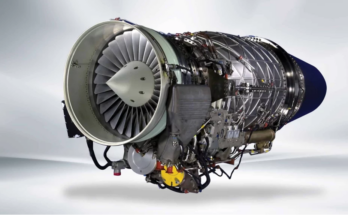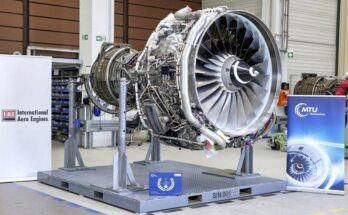by Bill Ostrove, Space Systems Analyst, and Richard Pettibone, Aerospace & Defense Companies Analyst, Forecast International.
Behind all the sound and fury surrounding the recent UTC/Rockwell deal, Northrop Grumman quietly moved in earlier this week and scooped up rocket and missile maker Orbital ATK in a deal valued at $9.2 billion. Under the agreement Northrop Grumman will acquire Orbital ATK for approximately $7.8 billion in cash, plus the assumption of $1.4 billion in net debt. The transaction is expected to close in the first half of 2018 and is subject to customary closing conditions, including regulatory and Orbital ATK shareholder approval.
The purchase came as a bit of surprise, as Northrop Grumman has only targeted very minor acquisitions in the past decade – its last big defense purchases occurred in the early 2000s with the additions of Litton, Newport News Shipbuilding (since divested), and TRW. Since those heady days of consolidation, the company has been a consistent and conservative player in the defense market, carefully organizing its portfolio of operations into three sectors: Electronic Systems, Information Systems, and Technical Services. Now, Orbital ATK will (pending approvals) form a fourth business sector, expanding Northrop Grumman into the complementary fields of rocket propulsion, space launch systems, composites and munitions.
At home, one of the Pentagon’s upcoming priorities will be modernization of the United States’ aging nuclear arsenal. Recently, the competition to replace the Minuteman III ICBM – under the auspices of the Ground-Based Strategic Deterrent program – was narrowed to Boeing and Northrop Grumman. Here, Orbital ATK is one of two suppliers of ICBM motors, the other being rival Aerojet Rocketdyne. Should the new tie-up proceed, Northrop Grumman may have a leg up on this program, which has an estimated value of over $62 billion, conservatively. Conversely, this is an area that may raise red flags with regulators as they scrutinize the deal.
Of particular interest is that the deal quickly transforms Northrop Grumman into a full-suite player in the burgeoning space market, a sector that is seeing some rapid growth and investment of late. While Northrop Grumman has been a developer of large satellites and satellite payloads, the addition of Orbital ATK creates a strong diversified space company. In particular, the new company will be strengthened in three primary areas: satellite construction, launch vehicle development, and space components.
Satellite Construction
Northrop Grumman is well known for its large satellites. The Northrop Grumman-built Chandra X-Ray Observatory launched in 1999 with a launch mass of 5,800 kilograms. The James Webb Space Telescope will launch next year with an estimated 6,200-kilogram launch mass. Northrop also makes payloads for satellites, specializing in large military spacecraft such as the Advanced EHF and SBIRS constellations.
However, driven by innovations in the commercial satellite market, small satellites are becoming more popular. Militaries often demand a high level of protection and capability that drives up satellite size. But even military satellites are getting smaller. The average launch mass of military satellites declined from a high of over 3,500 kilograms in 2012 to less than 1,500 kilograms in 2016. That trend is expected to continue as the U.S. begins the planning phase for its next-generation satellite architecture, which will likely include more small satellites.
In order to capitalize on this trend toward smaller spacecraft, Northrop Grumman has acquired Orbital ATK, which specializes in satellites with launch masses between 450 kilograms and 3,300 kilograms. Other major satellite producers are increasingly diversifying their product lineups. Lockheed Martin recently introduced a family of four satellites to serve demand for different sizes. Boeing also offers variants of its 702 satellite in different sizes as well as the 502 lightweight model. Even Space Systems Loral (SSL) has entered the market, signing a contract with Terra Bella (now owned by San Francisco-based Planet) to build 125-kilogram remote sensing satellites. Orbital ATK also has a strong presence in the commercial satellite market, diversifying Northrop Grumman’s revenue sources.
Launch Vehicle Development
In addition to Orbital ATK’s satellite business, Northrop Grumman gains access to its stable of launch vehicles. As with its satellite business, Orbital ATK focuses on the smaller end of the market, meaning its current group of rockets are not direct competitors with the products of other U.S. launch providers like United Launch Alliance (ULA) and SpaceX.
Orbital ATK’s launch lineup consists of the small Pegasus and Minotaur families of launch vehicles and the medium Antares. As shown in the graph above, these launch vehicles do not offer the same lift capacity as ULA’s Atlas V or SpaceX’s Falcon 9. They also do not have the same launch rates as their competitors. Over the past five years, Orbital ATK has conducted only 11 launches, compared to 28 for SpaceX and 54 for ULA. That being said, Orbital ATK consistently conducts launches on an annual basis, with at least one launch being conducted every year since 1990 other than 1992 and 2015.
Orbital ATK is also developing the Next Generation Launch (NGL) system. Orbital ATK and the U.S. Air Force have spent a combined $200 million on preliminary design work and facility expansion in preparation for a possible selection to design new launch vehicles for the Air Force. The NGL system will be in the same class as the Atlas V, Falcon 9, and ULA’s future Vulcan.
The Air Force and Orbital ATK are expected to make a “go/no-go” decision on NGL in late 2017 or early 2018. As part of Northrop Grumman, Orbital ATK will be in a better position to win a contract. The combined company will have estimated revenue of $18.1 billion and a research and development budget of over $800 million per year, giving it more resources to devote to NGL development. The additional business the combined company will obtain from the government will also give it more leverage in any future negotiations.
Space Components
The new company will also be a strong player in the space components market. Each company has strengths that will enable it to compete with subcontractors around the world for business with prime contractors such as Boeing, Lockheed Martin, and Airbus.
Orbital ATK and Northrop Grumman are currently involved in the following systems and services:
The combination of Northrop Grumman and Orbital ATK will not create many efficiencies. Since each company focuses on slightly different businesses, there are no factories or jobs to consolidate. The fact that Orbital ATK will remain a separate division within Northrop Grumman is a further sign that operations will not be consolidated in the near future. Instead, the acquisition of Orbital ATK turns Northrop Grumman into a stronger, more diversified player in the aerospace industry. In particular, the move will strengthen Northrop Grumman’s space and rocket launch capabilities. Northrop Grumman’s predecessor company, TRW, was a major player in the space market, but those capabilities have atrophied over the years. Northrop Grumman will now once again be a major player in space, as it is in electronics, UAVs, and other defense and aerospace segments.
Please feel free to use this content with Forecast International and analyst attributions, along with a link to the article. Contact Ray Peterson at +1 (203) 426-0800 or via email at ray.peterson@forecast1.com for additional analysis.
A military history enthusiast, Richard began at Forecast International as editor of the World Weapons Weekly newsletter. As the Internet grew in importance as a research tool, he helped design the company's Forecast Intelligence Center and currently coordinates the EMarket Alert newsletters for clients. Richard also manages social media efforts, including two new blogs: Defense & Security Monitor, covering defense systems and international issues, and Flight Plan, which focuses on commercial aviation and space systems. For over 30 years, Richard has authored the Defense & Aerospace Companies, Volume I (North America) and Volume II (International) services. The two books provide detailed data on major aerospace and defense contractors. He also edits the International Contractors service, a database that tracks all the contractors involved in the programs covered in the FI library. More recently he was appointed Manager, Information Services Group (ISG), a new unit that encompasses developing outbound content for both Forecast International and Military Periscope.






